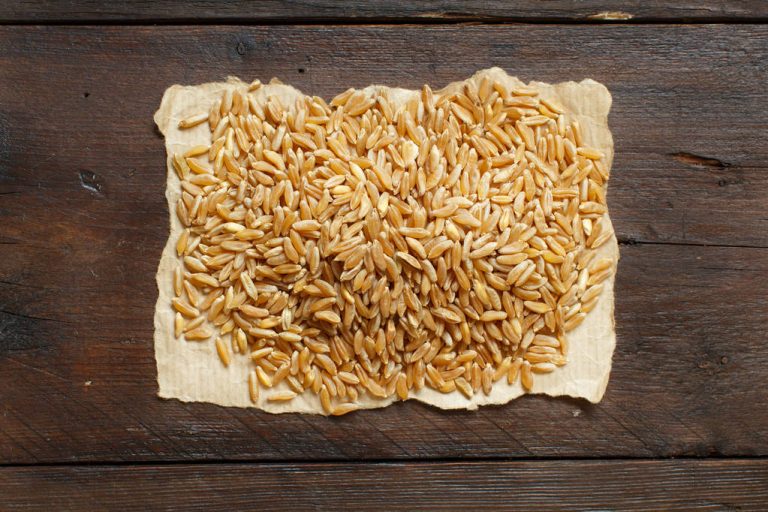Long forgotten, the virtues of Kamut are now being rediscovered. The old type of grain is an ancestor of wheat, but is significantly healthier and more sustainable than wheat. We show why.

Kamut or Khorasan wheat – one and the same?
Khorasan wheat refers to an original type of wheat that was cultivated 6000 years ago. Along with emmer and einkorn, it is one of the oldest cultivated grains. There are many legends about the exact origin, but the old grain probably comes from Central Asia. Hence the name, because “Chorasan” was an earlier region in parts of today’s Iran and Afghanistan.
In contrast, Kamut is not a designation for the grain variety, but rather a protected product designation for organically grown Khorasan wheat. In the 1990s, US farmers from Montana began marketing the organic product under the ancient Egyptian word “kamut.”
Differences from modern wheat
Kamut is a natural hybrid of a wild form of wheat and durum wheat. Kamut grains are two to three times longer than conventionally farmed wheat. The golden-yellow grain has a mild, nutty taste.
The ancient grain is grown in North America and southern Europe. Although old grain varieties such as Kamut deliver significantly lower yields than, for example, sophisticated modern wheat, Khorasan wheat is much more resistant to diseases and pests. However, if they are infested, conventional methods will not help. This is because pesticides do not work on this type of wheat. In spite of this, or precisely because of this, the cultivation is more sustainable than with today’s overbred varieties, which would hardly yield any yields without fertilizers and pesticides. The slower growth and the ineffective sprays are the reason why the wheat variety is uninteresting for conventional agriculture.
As a result, you will find almost exclusively organic Khorasan wheat in Germany – then under the name “Kamut”. Health food stores, organic or natural food stores are good addresses here. However, due to the lower yields, you have to expect higher prices than with conventional wheat.
Ingredients – What makes Kamut so healthy?
Ingredients and calorie content per 100 g:
Calories: 346g
Egg white: 14.8 g
Fat: 2.4g
Fiber: 8.9 g
Carbohydrates: 61.7 g
The high protein content immediately catches the eye. With 30-40% more protein than modern varieties, Kamut has excellent gluten properties. The ancient grain is therefore particularly suitable for elastic doughs.
The proportion of unsaturated fatty acids is also higher and the old grain can score with a variety of vitamins and minerals. According to NABU, Kamut contains significantly more zinc, phosphorus and up to 30% more magnesium than other types of whole grain. The most important vitamins are vitamin E, B1 and B2.
A particular advantage is the high content of selenium – a trace element which, in combination with certain vitamins, counteracts the formation of free radicals. It is also said to protect against cancer and strengthen the immune system. The daily selenium requirement is already covered with 200 g of kamut bread.
Is Kamut suitable for a gluten-free diet?
No! Kamut, like modern wheat, contains some gluten. People who suffer from celiac disease should therefore avoid the grain. Good gluten-free alternatives include millet, amaranth, quinoa or buckwheat.
However, the ancient grain is considered to be more digestible than conventional wheat. According to a study published on ScienceDirect, people with gluten sensitivity (not celiacs!) have significantly fewer symptoms after eating flour made from ancient grains.

use of kamut
In principle, you can use Kamut instead of wheat or spelt. The grain is available in the form of whole grains, flakes, couscous, semolina or flour. Unlike conventional wheat, Kamut does not differentiate between different types of flour, there is only a light and a whole grain variant.
Due to the high gluten content, this wheat variety is particularly suitable for elastic doughs, such as pasta or baked goods. The nutty note is also excellent in bread. The special form of the starch in Kamut also delays retrogradation in baked goods. That means they stay fresh longer.
Alternatively, you can simply cook the grains and serve them as a side dish.

